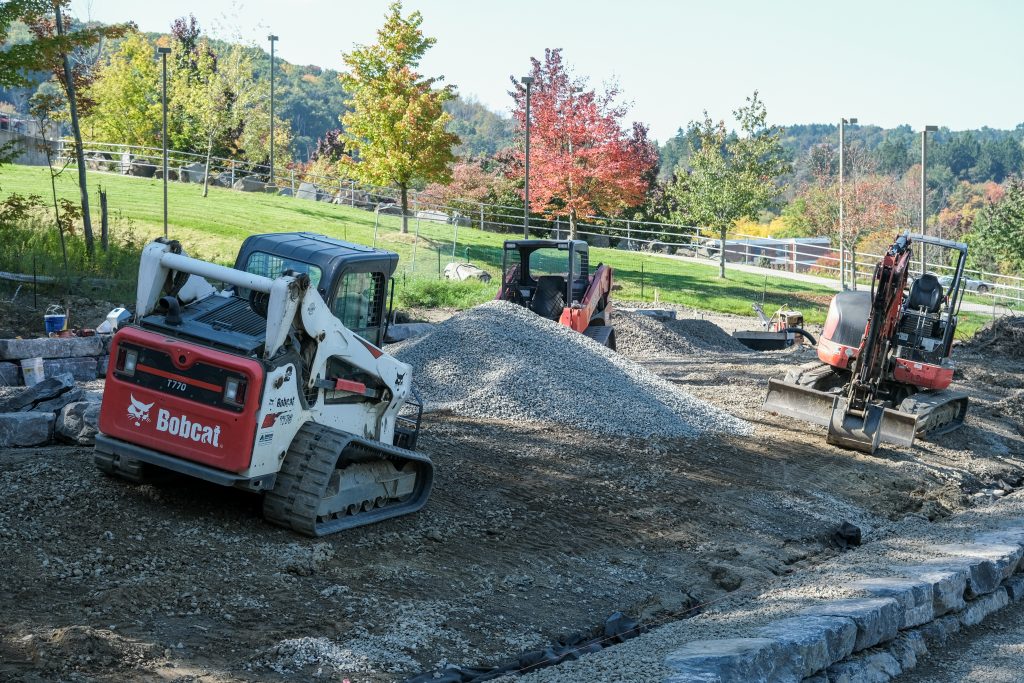Binghamton University’s five-year plan to upgrade campus recreational facilities is in progress.
After an approximate three-year planning phase, the project was officially announced in September of last year. The effort is intended to improve the “student experience” through the construction of new or improved outdoor facilities and other recreational spots on campus. Paola Mignone, the assistant vice president for residential experience and auxiliaries, told WBNG that she was “not aware” of any other SUNY schools doing something alike.
Casey Wall, the University’s director of residential life and housing, described the inspiration behind the effort.
“The motivation for the residential recreation space improvement projects came from conversations with students involved in the residential communities who expressed an interest in more outdoor gathering spaces on campus and from discussions around the challenges of maintaining the co-rec playing areas which regularly became worn to dirt and mud, making them more difficult to use,” Wall wrote in an email.
Over 7,500 students now reside in the residential communities on campus, according to BingUNews. Improving these outdoor recreational facilities shows the University’s “commitment” to improving the “well-being” of students. Hammocks have additionally been added to both the Mountainview College and Susquehanna communities, increasing the available space for students to “relax” outside with one another.
Wall said that they were “delighted” to see the completion of the field and sports court projects throughout campus this fall.
“More specifically the court improvement projects in [College-in-the-Woods], Hinman [College] and Hillside [Community] have allowed us to add surfacing to the basketball courts, adding lighting and new sand to the volleyball courts that provide a better playing surface while also jumping on the national pickleball bandwagon — as we relined the Hinman tennis courts to include both tennis and pickleball,” Wall wrote.
The field projects in CIW and Dickinson allowed for the drainage issues in Dickinson to be resolved and will allow the fields to be used for the full calendar year in both communities, Wall added.
Daniel Croce, the Student Association’s vice president for finance (VPF) and a senior majoring in business administration, expressed his hope that both the community councils and students alike can benefit from new outdoor spaces — primarily with the co-rec program. The SA is collaborating with the University to identify potential future projects and to look at spaces both in communities and in “general use spaces.” There is a plan to examine recreational facilities in the East Gym as part of the effort to deliver further “value” to students in those areas. Croce further addressed the mental benefits of the enhancement of these outdoor spaces.
“I 100 [percent] do believe these spaces can provide both mental and physical well-being opportunities,” Croce wrote in an email. “In the four years I have been at [BU] and the two years I have been VPF, I have seen firsthand the power of the campus outdoor spaces on mental well-being. Who doesn’t love great outdoor spaces!”
Croce further emphasized the importance of student input in the continued progress of these projects, saying that he would like to see outdoor recreational developments in every living community.
Benjamin Prigg, a senior majoring in environmental science, and Hewi Palmiotti, a first-year graduate student studying geography, are the co-vice presidents of the Binghamton Outdoors Club. In a joint statement, they elaborated on the benefits of developing new outdoor spaces on campus.
“Access to outdoor green spaces has huge mental benefits, especially for stressed out students, and is crucial for a healthy and sustainable community,” Prigg and Palmiotti wrote. “A lot of students coming to Binghamton have never had good outdoor recreation/green spaces before — which is what we are trying to change with the outdoors club. We’re very happy to see the administration improving facilities that encourage students to get outside together but hope they remember to give equal attention to green spaces like the nature preserve.”



